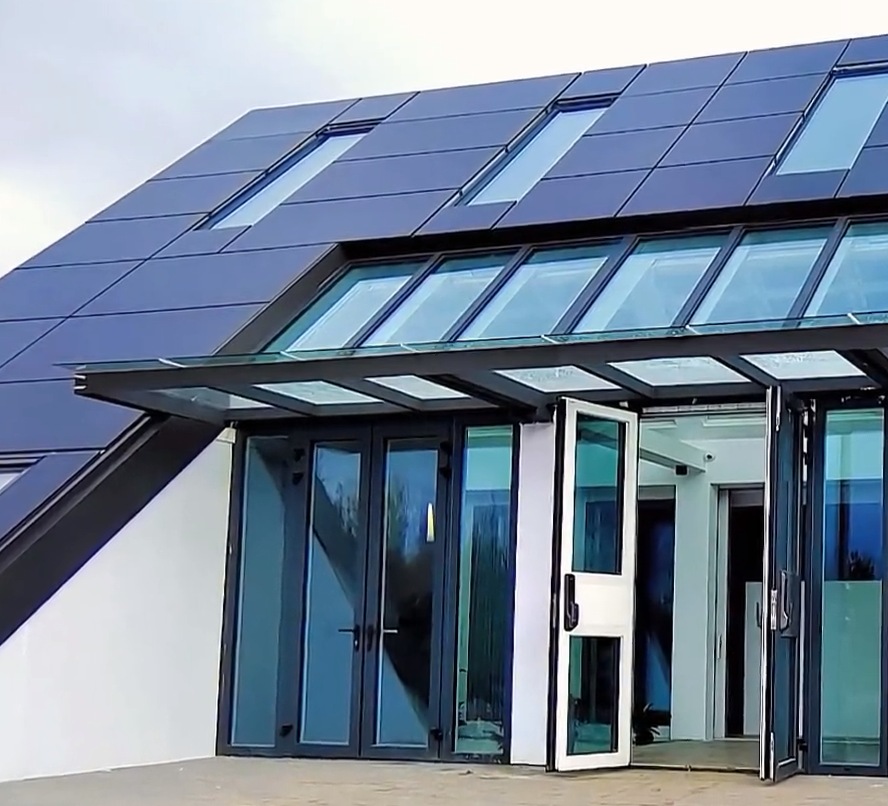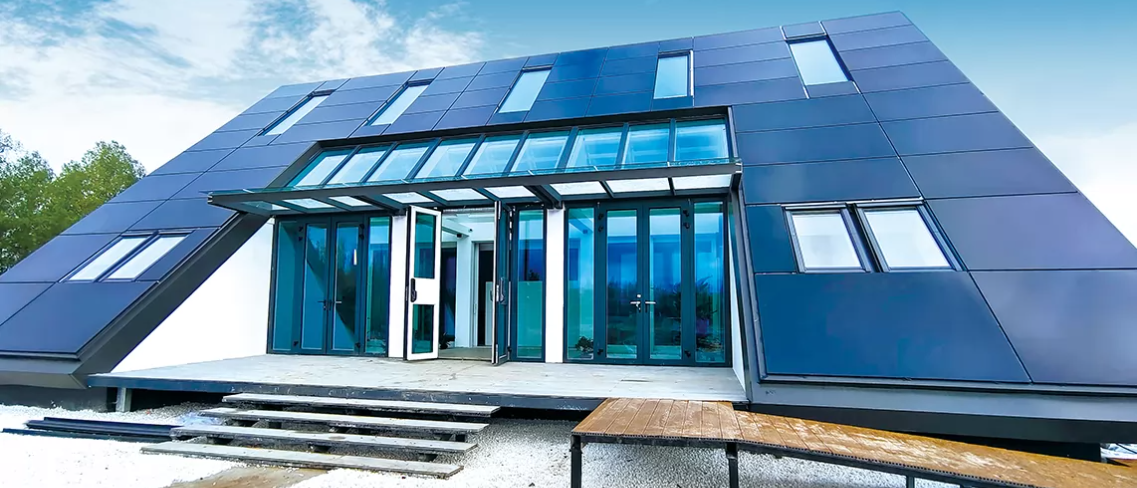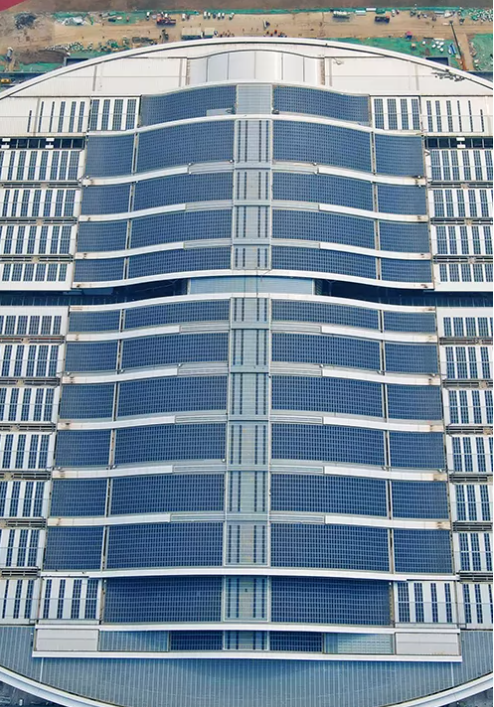Aug. 29, 2022
BIPV Building Integrated PV (PV or Photovoltaic) is a technology that integrates solar power (photovoltaic) products into a building. BIPV is a modern material that replaces traditional materials as part of the building structure and also incorporates photovoltaic (PV) modules for electricity or heat generation. In recent years, BIPV materials have been commonly used in some buildings. Building envelopes, such as roofs, skylights or facades. Global solar (PV) production capacity has increased 40-fold in the 10 years to 2014 and significant growth in solar PV capacity is expected to continue over the next 20 years.
The requirements for PV modules are high. Photovoltaic modules must not only meet the functional requirements of PV power generation but also the basic functional requirements of buildings.
Building-integrated PV (BIPV) is different from building-attached PV (BAPV: Building Attached PV). Solar building integration can be divided into two main categories: one is the combination of PV arrays and buildings. The other category is the integration of PV arrays with buildings. Such as solar tile roof, solar curtain wall and solar light roof. Of these two approaches, the combination of PV arrays with buildings is a common form, especially with building roofs.

Integration with buildings
BIPV is a further combination of building and photovoltaic, integrating photovoltaic devices with building materials. In general, building envelopes are covered with paint, decorative tiles or curtain wall glass in order to protect and decorate the building. If bipv devices are used to replace some of the building materials, i.e. photovoltaic modules are used for the roofs, facades and windows of buildings, this can be used both as building materials and for power generation. For buildings with a frame structure, the entire envelope can be made into a photovoltaic array and appropriate solar modules can be selected to absorb both direct sunlight and reflected sunlight. Large-scale coloured solar modules have been developed to achieve these aims and make the building look more attractive.
Integration with solar PV systems
BIPV is a photovoltaic system that is integrated into the building and can be used as a stand-alone power source or as a grid-connected supply When the system is involved in grid connection, it can be used without batteries. However, an installation with the grid is required and grid-connected power generation is the new trend in solar applications today. The PV modules are installed on the roof or external wall of the building and the lead end is connected to the public grid via a controller needed to supply power to the PV array and the grid in parallel to the user, which makes up a grid-connected solar system.

(1) Green energy. BIPV produces green energy, is the application of solar power generation, will not pollute the environment. Solar energy is the cleanest and free of charge, and there are no ecological side effects in its exploitation. It is also a renewable energy source that is inexhaustible.
(2) It does not take up land. BIPV are generally installed on unused rooftops or external walls and do not take up additional land, which is particularly important for urban buildings where land is expensive; summer is the peak season for electricity consumption, which also coincides with the period of maximum sunshine and the period when the PV system generates the most power, which can play a peaking role for the power grid.
(3) Solar photovoltaic building-integrated technology uses grid-connected photovoltaic systems, BIPV do not need to be equipped with batteries, saving investment and are not limited by the state of battery charge, and can make full use of the power emitted by the solar system.
(4) Energy saving in buildings. BIPV absorb solar energy into electricity, greatly reducing the integrated outdoor temperature, reducing the wall heat and indoor air-conditioning cold load, so can also play a building energy-saving role. Therefore, the development of solar photovoltaic building integration can "save energy and reduce emissions".
It can be said that BIPV is suitable for most buildings, such as solar roofs, curtain walls, canopies and other forms can be installed.
Solar Tiles Roof : 1) they can be installed at or near the best angle, so they can generate maximum or greater power; 2) they can use standard PV modules, with good performance and low cost; 3) they do not conflict with the function of the building; 4) they have the lowest or low cost of PV power generation, and are one of the preferred installation options for PV systems.
Solar curtain wall:solar curtain wall to meet the BIPV requirements: in addition to power generation function, to meet all the functional requirements of the curtain wall: including external maintenance, transparency, mechanics, aesthetics, security, etc., high component costs, PV performance is low; to design, construction and installation with the building at the same time, PV system engineering progress by the overall progress of the building constraints; PV array deviates from the best installation angle, low output power; power generation High cost; enhance the social value for the building and bring the effect of green concept.
Solar skylight: Solar skylight requires transparent components, the efficiency of the components is low; in addition to power generation and transparency, the canopy components have to meet certain mechanical, aesthetic, structural connection and other architectural requirements, the cost of components is high; the cost of power generation is high; for the building to enhance the social value, bring the effect of the green concept.
Solar roof tiles: solar tiles using flexible thin-film solar chips and high light-transmission glass combined to replace all types of traditional roof tiles, beautiful and efficient power generation performance of the integration of new power generation tiles, forming a new generation of power generation roof tiles.
